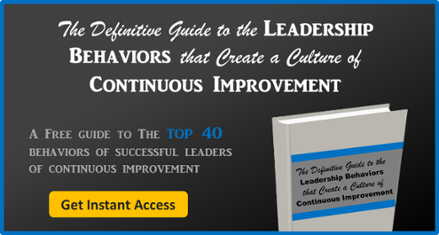 The Lean practice of Catchball starts with an idea for improvement or a challenge that needs to be addressed. One person captures what they know about the current situation and then metaphorically passes the “ball” to someone else for additional input or action. This back and forth process, involving as many people as necessary, continues until the issue is resolved. Ideas are usually started by managers, but the Catchball process can involve team members at any level. It is a simple, yet effective way to produce positive change, but it is harder to execute than it may seem.
The Lean practice of Catchball starts with an idea for improvement or a challenge that needs to be addressed. One person captures what they know about the current situation and then metaphorically passes the “ball” to someone else for additional input or action. This back and forth process, involving as many people as necessary, continues until the issue is resolved. Ideas are usually started by managers, but the Catchball process can involve team members at any level. It is a simple, yet effective way to produce positive change, but it is harder to execute than it may seem.
The Challenge: Letting Go is Hard
“If you want something done right, you have to do it yourself,” is one of the most harmful ideas in any organization. This way of thinking slows the pace of improvement, stifles innovation, and prevents people from practicing new skills. So why is it so prevalent? It doesn’t take too many instances of getting burned by employees or peers who don’t deliver on promises or bungle assignments for people to give up on collaboration and lose trust.
The desire to control everything that impacts one’s work is very strong and difficult to overcome. If my performance will be evaluated based on the outcome of this project, how can I possibly pass the “ball,” even for a short time, to someone who may fumble it? What if I pass along my best idea for improvement and it goes into a black hole, never to return?
The Solution: Transparency
In nuclear negotiations with foreign powers, you often hear leaders use the phrase, “Trust, but verify.” It turns out that the same approach works perfectly in Catchball. With a software solution that makes it easy to follow the ball from person to person, people can figuratively let go, without losing insight. They are able to see what action is being taken or what new information is being gathered, without micromanaging or nagging. If progress does stall, the problem can be recognized immediately and appropriate action can be taken to get the ball rolling again. This visibility into the state of improvement work makes it much more comfortable for managers and employees alike to rely on each other to achieve amazing results.
The Results: Growth and Engagement
Employees who are empowered to run with an idea get the chance to learn and practice new skills. They become more confident speaking up when they notice opportunities for improvement and get more engaged in finding innovative ways to meet new challenges. Managers who have faith in their teams can leverage their time most effectively, and focus on strategic priorities, safe in the knowledge that forward progress is being made.
Trust and transparency go hand in hand. Effective use of the Catchball technique requires both. Fortunately, software can help your team keep their eyes on the ball.



Add a Comment